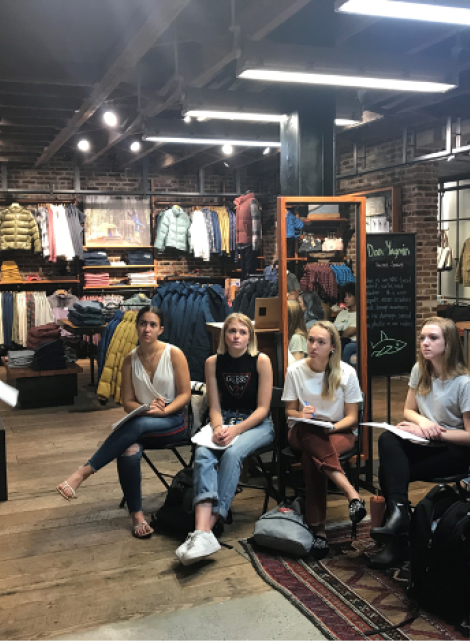Recently, our Introduction to the Fashion Business class visited the Patagonia store in Manhattan’s Meatpacking District.
Upon entering, my fellow LIM College classmates and I looked in awe at the structure of the building, the visual merchandising display, and the wall-plaques showcasing the original Meatpacking building that the store now occupies.
Our host, Floor Leader, Jesse Lerer, explained Patagonia’s goal to create the best product they can while causing the least harm to the planet. To achieve this, Patagonia reuses materials and makes their products multipurpose. The Meatpacking store itself is actually an example of this; instead of destroying the original building’s interior, Patagonia kept the original butcher’s table and exposed brick walls; even the steel meat-hook rails have become their clothing racks.
During my short, but marvelous, time at Patagonia Meatpacking, I learned about Patagonia’s efforts to reduce pollution and protect the environment. To visualize what kind of products they sell, the photo on the right shows a vest made from recycled polyester and recycled down. Working on the manufacturing and retail levels, they have made great progress in deciding what materials to use in order to reduce pollution. Patagonia is also innovating ways to save time and reduce waste. For example, when Patagonia began using organic cotton, there was an issue with insects, sticks, and leaves sticking to it. Their Thai suppliers realized that freezing and spinning the cotton would cause anything sticking to it to fall off. This reduced cotton-cleaning time and labor immensely.
Patagonia donates 1% of their annual sales to various grassroots organizations, and every store has a budget to donate to local causes. In fact, they donated all of their 2016 Black Friday sales to environmental causes.
The company constantly educates and encourages customers to get involved. For instance, they sell an innovative product, the GuppyFriend Washing Bag, which customers wash with their clothes to reduce the amount of microfibers going into the ocean.
Patagonia is also extremely concerned with sustainability at their factories, which is why they have partnered with a Swedish certification organization, Bluesign, to ensure any chemicals used are safe for the consumer and the factory workers. Recognizing that happy employees work harder and better, the outdoor clothing company also treats employees to one day off a year to go surfing, hiking, etc.
I think Patagonia is a courageous company, taking stances and running their store in a way that may not follow a traditional retailer’s goal of encouraging profit above everything else. The company has made a huge impact and continues to profit, which has attracted a lot of attention, and, more importantly, has allowed them to donate more and invest in programs to save our Earth.




